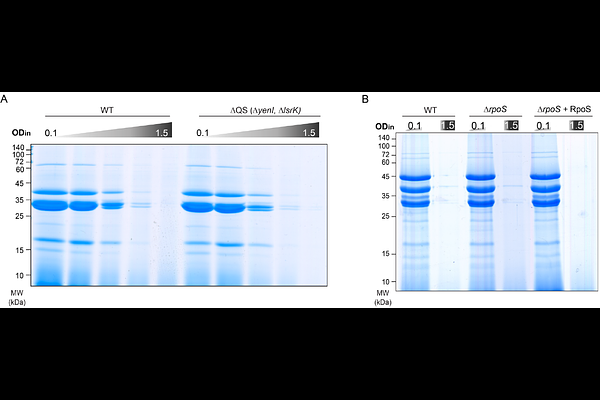Yersinia actively downregulates type III secretion and adhesion at higher cell densities

Yersinia actively downregulates type III secretion and adhesion at higher cell densities
Ermoli, F.; Spahn, C.; Glatter, T.; Diepold, A.
AbstractThe T3SS injectisome is used by Gram-negative bacteria, including important pathogens, to manipulate eukaryotic target cells by injecting effector proteins. Some bacterial species display bimodal expression of the T3SS, allowing the T3SS-negative population to benefit from the activity of their T3SS-positive siblings without investing in the assembly and production of injectisomes. In contrast, Yersinia enterocolitica, a main T3SS model organism that uses the system to evade the host immune response, was thought to uniformly express and assemble injectisomes, which are then activated by target cell contact. In this study, we found that at higher local bacterial concentrations, Yersinia actively downregulates T3SS expression, assembly and activity. This effect is reversible, highly specific, and distinct from stationary phase adaptation. A key player is the main T3SS transcription factor VirF, which is downregulated at the higher cell densities suppressing T3SS activity and whose in trans expression restores T3SS expression and assembly. Transcript analysis showed that this effect is mediated by increased levels of the regulatory RNAs csrBC, which sequester the regulatory protein CsrA and destabilize the virF transcript. Downregulation of the VirF-dependent adhesin YadA led to a drastic reduction in bacterial cell adhesion. We propose that the phenotype described in this study, active downregulation of cell attachment and T3SS secretion at higher local bacterial densities, is a strategy implemented to promote bacterial replication and dissemination at later stages of infection.